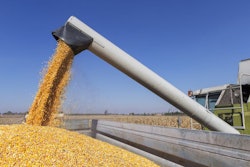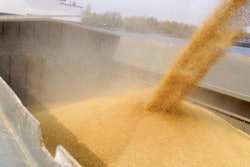
Corn prices break US$7 as impact of Russian invasion hits world markets
Soybean stocks plummeted and corn prices surged this past month on account of shortfalls in South America and the outbreak of war in Ukraine, according to the U.S. Department of Agriculture (USDA).
Exports of U.S. corn are expected to reach 2.5 billion bushels this year, up from the 75 million bushels the USDA estimated would be exported before the onset of violence in Ukraine. Ethanol production is also expected to increase in response to soaring oil prices, with corn use for fuel anticipated to rise from 25 million bushels to 5.35 billion bushels.
Global stocks of soybeans, though not as heavily impacted by the events in Europe, nonetheless fell the lowest figures seen since 2015-16, according to USDA’s March World Agriculture Supply and Demand Estimates. The USDA cut global soybean production by 10.1 million tons on account of poor weather and decreased yields across South America. However, James Mintert, director of Purdue University’s Center for Commercial Agriculture, said he believes USDA is still overestimating the potential size of the South American harvest. Projections from the U.S. agency remain larger than any figures available from private traders or from the South American agricultural agencies, he said.
Although Ukraine is not a major producer of soybeans, the conflict there has caused soybean prices to flirt with US$17 per bushel on a number of occasions on concerns that rising prices for corn, wheat and other commodities will steal acreage from soybeans, Mintert said. Corn futures were trading for US$6.42 per bushel on March 10, up from US$5.89 in February and US$5.59 in January, he said, making corn a much more attractive option than it was a month ago. The increase in soybean futures, up to US$14.50 per bushel compared with last month’s US$14.28, was less dramatic, Mintert said.
Whether farmers can actually get these prices varies substantially by region, Mintert said. In the immediate aftermath of the attack on Ukraine, he said, prices rose “basically overnight as there was mad scramble to fill barges,” exceeding US$7 per bushel at U.S. river terminals, likely on account of efforts to replace Black Sea supplies as quickly as possible. But at the same time, some producers without immediate access to the river terminals saw corn prices fall.
It’s also not clear, Mintert said, how quickly U.S. farmers can change their acreage plans in response to immediate events, although work in some areas has been delayed due to unseasonably wet weather.
“It’s been the wildest year in decades,” he said, noting that the planting report due from USDA at the end of March may be one of the most influential planting reports to be issued in years.










